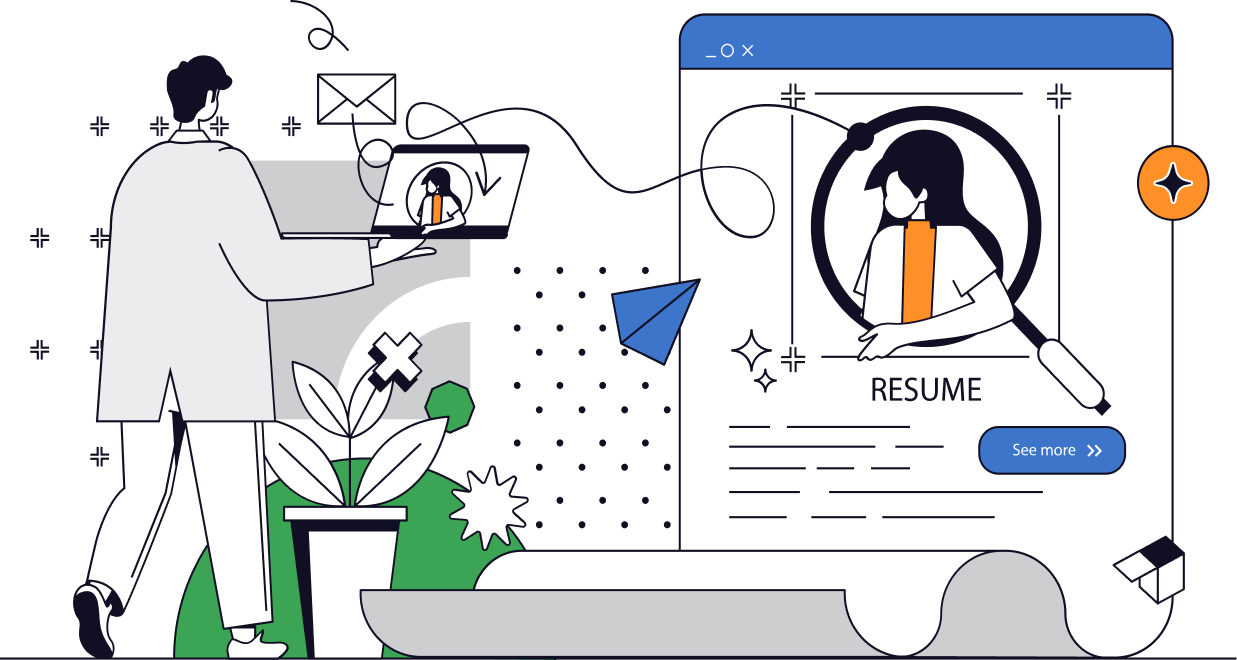


It is often assumed that limiting the resume to one page is the preferred format. For entry-level candidates, new graduates, individuals with only a few years-experience, or those wishing to make a career change, a one-page resume may be sufficient. However, for many, more experienced job seekers, a two-page resume offers a better, more readable option to highlight all of the relevant information the hiring manager will need to see. In either case, ensuring that the resume is organized properly and easy to read is better than trying to fit too much information on one page. The length of resume is less important than making sure that your experience and accomplishments are showcased properly, so that the hiring manager will recognize the viability of your candidacy.
Targeted Job Title
Creating a targeted job title is optional, however it creates a visual starting point for the body of your resume and succinctly states the position you are seeking. The Target Job may or may not be consistent with your current job, but will demonstrate your interest in advancing to that position.
Career Summary
Whether you title this section Experience, Career Summary, Professional Profile or Performance Profile, the objective remains the same, to clearly and precisely state your professional background and demonstrate your fit as a candidate for the position.
The Career Summary section should be limited to a few sentences that emphasize your relevant experience, skills and unique abilities. This is the perfect opportunity to incorporate Keywords and Keyword-phrases to increase the likelihood that the ATS software will select your resume. In addition, when the hiring manager reads your resume, your most notable assets will be readily visible - at the beginning.
The Job Objective
Sometimes referred to as a career objective, the job objective is an optional section of the resume, although it may be included in the absence of a targeted job title. Listing a job objective takes up room on the resume, and the hiring manager already knows what job you are seeking. If you decide to add a job objective, use one or two sentences to describe the position you're seeking, the level of challenge you desire or even the industry you'd like to work in.
The Skills or Core Competencies Section
This section of the resume uses a variety of headings. Skills. Core Competencies. Highlights of Experience. Qualifications. Here you will want to include a Keyword-rich list that gives a quick snapshot into your qualifications against the job description.
Using two or three rows of bullets is the preferred layout to highlight your skills. It is easier for the hiring manager to quickly read and assess your experience. You may also use short descriptive language for this section, if a few words better express your experience.
In either case, formatting with columns and bullets, keeping it brief and including Keywords wherever possible will create a polished, professional resume.
Work Experience
Whether writing a one or two-page resume, it is best to fit your most recent work experience as close to the top of the first page as possible. By including work experience closer to the beginning, the person reading the resume will have sufficient information to continue reading - or not.
If you are including a second page, try not to interrupt information about a specific job between page one and page two. Keep the content of each job on one page, whenever possible.
As you list your work history, choose job experiences that demonstrate more than basic job skills. You should have already included your basic skills in the Skills/Core Competencies section. This is where you demonstrate how you benefited the company. Describing a task or responsibility, the efforts you made, and the results of those efforts will clearly demonstrate your value to a company. Wherever possible, include data, percentages or quantifiable results.
Additional Work Experience
Continue presenting your work experience on the second page, and follow the same format as page one. It is not necessary to add lengthy descriptions to all prior jobs, unless the experience directly relates to the job being considered.
Education and Training
The Education section can be placed at the beginning of the resume, or at the end, depending on its value a/o importance. However, not everyone has a college degree - which is not an obstacle. If you do not have a degree, list courses you have completed, certifications you have obtained, or related continued education.
If you are currently enrolled in a program, include language such as, “Candidate”, "Graduate studies in … in progress" or "Master's Degree in … anticipated" and give the date.
If you have no college degree, no professional development or training and are not currently enrolled in an educational program, showcase your skills and work experience to demonstrate that you are upwardly mobile and have held positions of increasing responsibility. Experience often replaces academic requirements.
Professional Associations
This is an optional category. If you choose to include Associations, be sure that the memberships add value to your application and will be recognized by the hiring manager.
Header/Footer
Always include your name and page number on the second page of your resume. This can be at the top or bottom, depending on your format.
Content at Least Half-way Down the Page
If the content on your second page is only a few sentences, or a short segment, try to edit your first page and include everything on page one. It is best to experiment with type size, font choices or white space to determine whether you can create a professional resume in one page, or two.